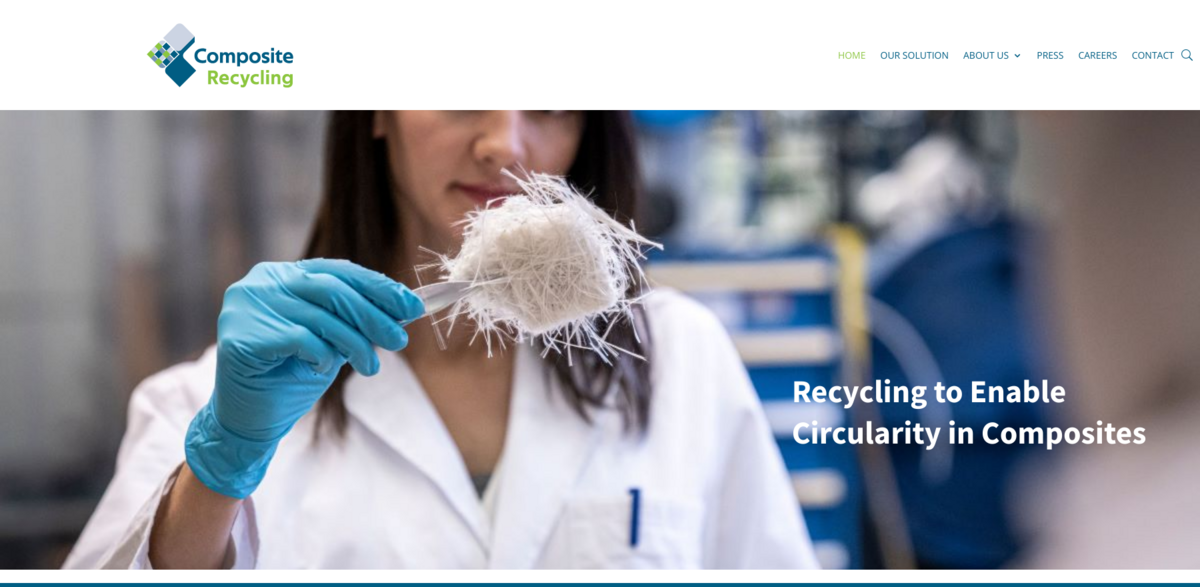What the Project Is
Composite Recycling’s mission is all about enabling circularity in composites through breakthrough thermolysis-based technology. The project tackles a long-standing problem: fibre-reinforced plastics (FRP) have been designed to be durable and versatile, making them nearly impossible to recycle once their useful life ends. For decades, recycling composites meant facing landfill or incineration with all the adverse environmental impacts that come along. This innovative approach uses pyrolysis – heating composites in an oxygen-free environment – to separate the resin from the fibers, allowing these high-value materials to be reclaimed. In close collaboration with the advanced composites lab of EPFL, the process recovers glass and carbon fiber while also reclaiming the oil content, making it possible to manufacture new, high-performance composites with minimal impact on the planet.
Main Benefit
The technology brings several key benefits that are transforming composite waste management:
- • Over 450 pyrolysis tests have been conducted across various sectors like marine, aerospace, and automobile, demonstrating the process’s robustness.
- • The recycling units are designed to fit into 30” containers, offering mobile and cost-effective deployments right at the waste stockpile sites.
- • The process preserves the properties of reclaimed fibres and thermolysis oil, ensuring the recycled materials meet high-value production standards.
- • It facilitates end-of-life product audits and recyclability testing, helping manufacturers design with sustainability in mind.
- • The solution provides a sustainable, low-emission alternative to landfilling and incineration, significantly reducing carbon emissions.
Advanced Thermolysis Technology
The heart of the project lies in its advanced thermolysis technology. By applying heat in an oxygen-free environment, the resin in FRP turns into gas and oil, while the fibers remain intact. This method ensures that the reclaimed materials retain as much of their original strength and utility as possible. The process is not just technically sound—it’s also energy efficient and reliable, designed to meet diverse industrial needs. The technology demonstrates that recycling composite materials can be both environmentally responsible and economically viable, opening the door to a circular material economy where waste truly becomes a resource.
Mobile FRP Recycling Services
One of the standout features of this project is its mobile recycling capability. The thermolysis treatment units are compact enough to fit into standard 30” containers. This clever design means that recycling can be done on-site, drastically cutting down on transportation costs and the carbon footprint associated with moving bulky waste materials. Whether it’s surveying regional waste streams or treating decommissioned wind turbine blades, the mobile units provide a flexible solution that adapts to the needs of industries across the board. It’s a dynamic approach that makes recycling accessible anywhere there is composite waste.
Reclaimed Materials & Calibration
The project not only focuses on breaking down waste but also on the quality of the output. The reclaimed fibers and thermolysis oil undergo a post-treatment process that cleans and calibrates these materials to meet stringent manufacturing specifications. This careful calibration ensures that when manufacturers recombine them into new composites, plastics, or resins, there’s typically no need for additional retooling. It also opens up opportunities for composite manufacturers looking for reliable recycled content in even high-performance products. This thoughtful approach to material recovery and quality control is pivotal, ensuring that sustainability does not come at the expense of product performance.
Project Impact
- • SDG 9: Industry, Innovation and Infrastructure – Facilitating sustainable industrial operations and innovative recycling solutions.
- • SDG 12: Responsible Consumption and Production – Promoting recycling and efficient use of resources by diverting composites from landfills.
- • SDG 13: Climate Action – Lowering carbon emissions through mobile, low-emission recycling techniques.
- • SDG 11: Sustainable Cities and Communities – Reducing waste and pollution in urban and industrial areas.
Looking Ahead
As the world increasingly looks for responsible solutions to manage end-of-life waste, this project stands out with its clear focus on maintaining material value while protecting the environment. The recyclability testing, mobile recycling services, and customized calibration of processing units show an understanding of both the challenges and opportunities in composite recycling. The approach has already made significant strides by demonstrating the feasibility of closing the composite loop—turning discarded materials into high-quality inputs once more. This forward-thinking initiative not only promotes environmental stewardship but also helps decarbonize supply chains across various industries. With ongoing testing, calibration, and supportive networks of upstream and downstream partners, the project is poised to lead the charge in smart composite recycling and sustainable production practices… the future of composite waste management just got a lot brighter.





















